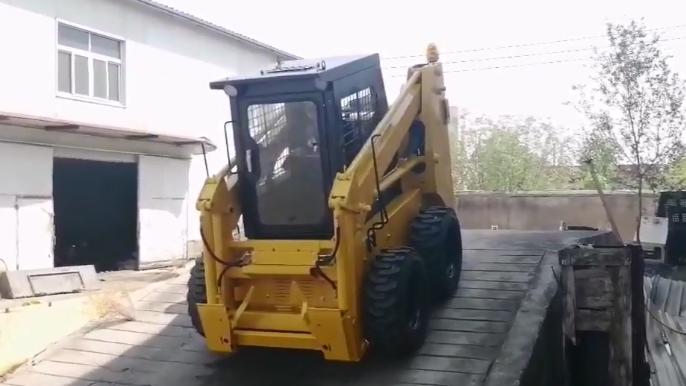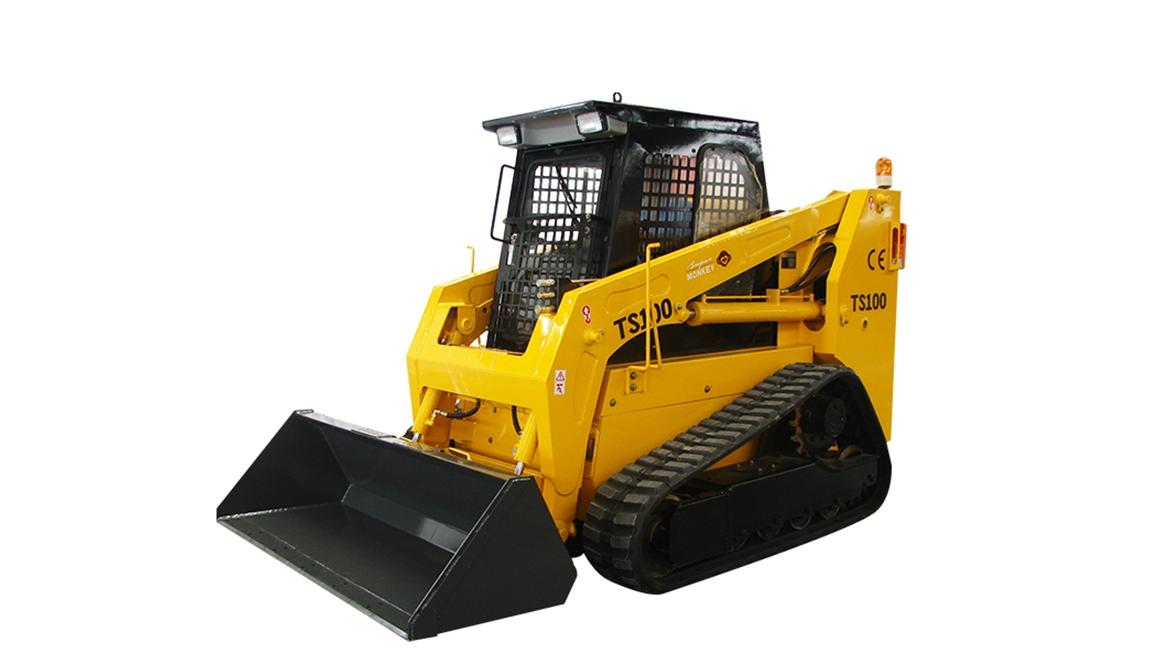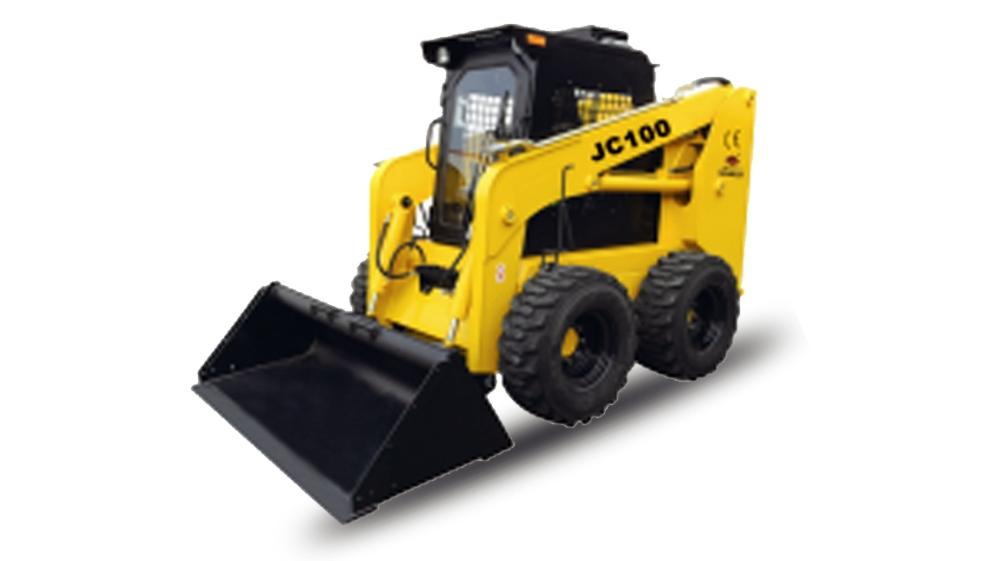How to Operate a Skid Steer Loader Safely?
1. Introduction
Skid steer loaders are compact, powerful, and highly versatile machines widely used in construction, landscaping, agriculture, and snow removal. Their ability to turn within their own footprint makes them ideal for tight spaces, but it also increases the risk of accidents if not operated properly. From novice operators to seasoned professionals, following safety protocols is essential. This guide explores best practices for operating a skid steer loader safely, minimizing risks and ensuring a productive work environment.
2. Understanding the Machine
Before operating any machinery, it’s vital to understand how it works. Skid steer loaders feature a rigid frame and lift arms that support a wide range of attachments. They come in both wheeled and tracked versions, each suited for different terrains. Wheeled skid steers are ideal for hard, smooth surfaces, while tracked versions handle soft or uneven terrain better.
Inside the cab, operators will find hand and foot controls that maneuver the loader, bucket, or attachment. Modern machines may also feature joystick-style controls and digital displays. Knowing how each control works and the limits of your machine (such as tipping load, operating weight, and hydraulic capacity) is the first step in safe operation.
3. Pre-Operational Safety Checks
Performing pre-operational checks ensures that your skid steer is ready and safe to use. These inspections should become a habit before each use.
Walk-around inspection: Check for visible damage, tire or track wear, and fluid leaks.
Fluid levels: Inspect engine oil, hydraulic fluid, coolant, and fuel.
Hydraulics: Look for damaged hoses, worn connectors, or leaks.
Attachments: Ensure attachments are correctly secured and operational.
Cabin readiness: Clean cab windows for visibility, check for debris or loose objects inside the cab.
Failing to perform these checks can lead to equipment failure and serious accidents.
4. Proper Personal Protective Equipment (PPE)
Even though skid steer loaders have enclosed cabs, wearing PPE is still essential:
Hard hat: Protects from falling debris.
Steel-toe boots: Prevent foot injuries during entry or while on the jobsite.
High-visibility vest or clothing: Enhances visibility on busy job sites.
Gloves and safety goggles: Offer protection during inspections and maintenance.
Hearing protection: Useful in prolonged exposure to loud equipment.
Always wear your seatbelt or lap bar restraint when operating the machine. This could save your life in a rollover.
5. Starting and Entering the Machine Safely
Entering and exiting the cab safely is often overlooked but critical. Always use the three-point contact rule: two hands and one foot, or two feet and one hand should be in contact with the machine at all times.
Before starting:
Make sure the area around the machine is clear.
Adjust your seat and mirrors for comfort and full visibility.
Fasten the seatbelt or engage the lap bar.
Ensure all controls are in neutral.
Turn the key or push the start button according to the manufacturer’s instructions.
Allow the machine to warm up for a few minutes, especially in cold weather.
6. Safe Operating Techniques
Operating the skid steer safely involves more than just moving dirt. Here are essential tips:
Drive slowly, especially in tight or uneven areas.
Keep the load low to maintain visibility and reduce the risk of tipping.
Avoid sharp turns or sudden movements, especially with heavy loads.
Operate on slopes cautiously: travel straight up or down and avoid turning sideways.
Be alert for people, especially in blind spots, and use the horn or lights when necessary.
Never carry passengers or use the skid steer for unintended purposes like lifting workers.
7. Attachment Use and Safety
Skid steers are prized for their compatibility with various attachments. However, each tool has its safety guidelines:
Ensure compatibility with your machine.
Inspect attachments before use for wear, cracks, or hydraulic issues.
Always lock attachments securely in place before operating.
When switching tools, make sure the engine is off and pressure is relieved from hydraulic lines.
Examples of safe usage:
Buckets: Avoid overfilling; lower when transporting.
Augers: Keep distance from the rotating tool.
Grapples: Ensure the material is secured and won’t fall unexpectedly.
8. Working in Confined or Crowded Areas
Many skid steers operate in congested areas. Safety is paramount in such conditions.
Use a spotter if visibility is limited.
Communicate clearly using hand signals or two-way radios.
Keep a safe working distance from other machines and personnel.
Avoid swinging attachments near others.
Install backup alarms or cameras for better visibility.
9. Emergency Situations and Shutdown Procedures
Being prepared for emergencies can prevent injury or damage.
In case of a rollover, stay inside the cab, brace yourself, and wait until the machine comes to rest.
Fires: Keep a fire extinguisher in the cab; avoid refueling near open flames.
For hydraulic or brake failure, lower the load and shut down the machine immediately.
Safe shutdown:
Park on a level surface.
Lower the arms and attachments.
Turn off all controls.
Stop the engine and remove the key.
Exit the machine using proper technique.
10. Maintenance and Inspection Routines
Routine maintenance keeps your equipment safe and running efficiently.
Daily: Fluid levels, tires/tracks, visible damage.
Weekly: Grease fittings, check hydraulic systems, inspect belts.
Monthly: Change filters, inspect battery, tighten bolts and connections.
Log maintenance activities in a record book. Report issues immediately and never operate a machine in poor condition.
11. Operator Training and Certification
Proper training is a legal and safety necessity.
All operators should undergo formal training and certification.
Training should cover machine operation, emergency protocols, and daily inspections.
Encourage refresher courses to keep safety knowledge up-to-date.
Promote a culture of accountability and safety awareness on the job.
12. Common Mistakes and How to Avoid Them
Some mistakes are surprisingly common but easily preventable:
Overloading: Follow the rated capacity strictly.
Ignoring maintenance issues: Small problems can escalate.
Improper terrain usage: Don’t use wheeled models on soft ground.
Distractions: Stay off phones and avoid multitasking while operating.
Bypassing safety mechanisms: Never disable seatbelts, alarms, or interlocks.
13. Conclusion
Skid steer loaders are invaluable tools when used correctly, but their safety depends on the knowledge and discipline of the operator. From pre-inspection and proper PPE to operating awareness and routine maintenance, each step is critical to avoiding accidents. A trained and alert operator is the most effective safety feature any machine can have. By following the guidelines in this article, operators can protect themselves, their teams, and the equipment they depend on every day.
Post time:Jun.23.2025



